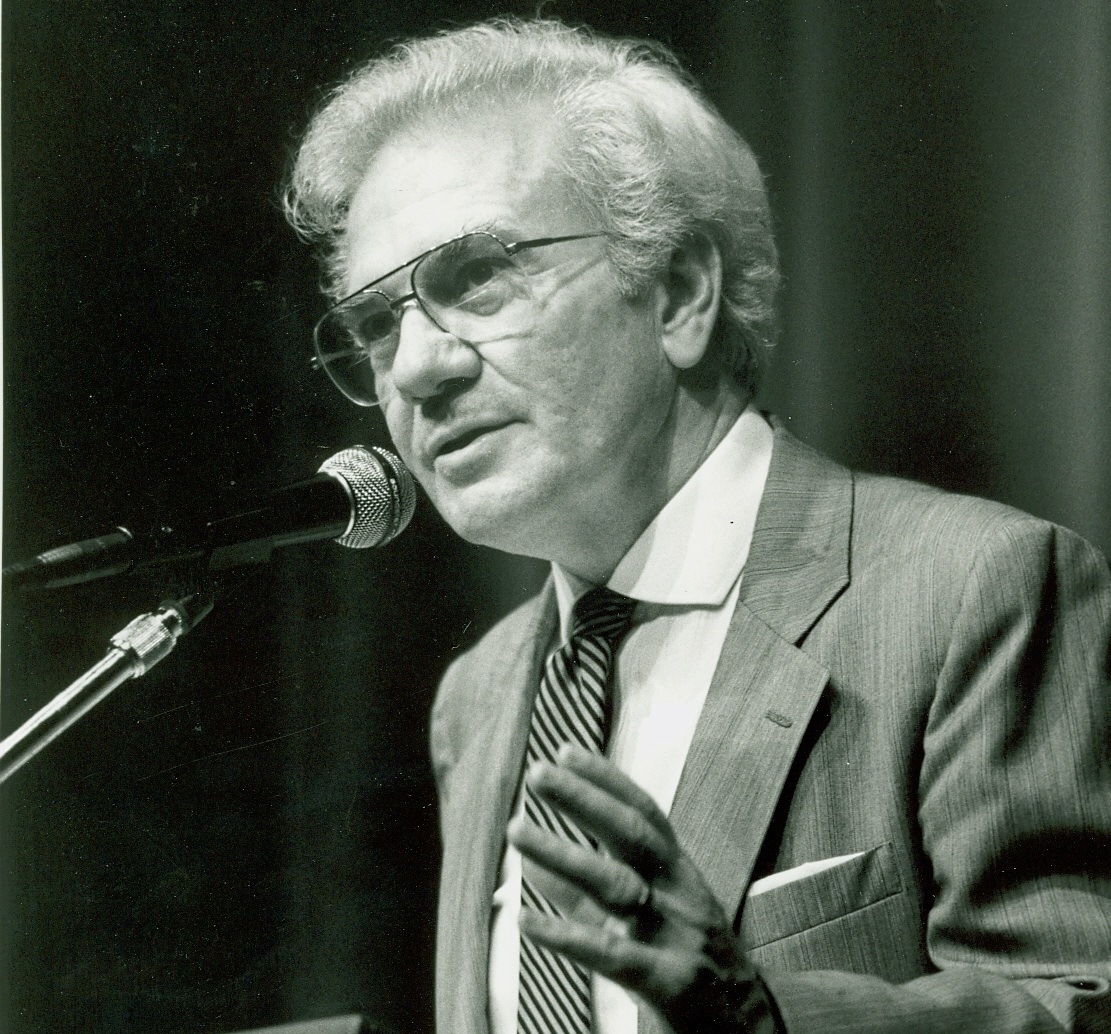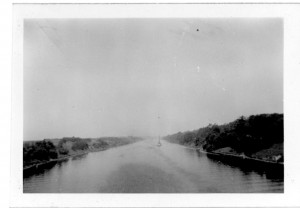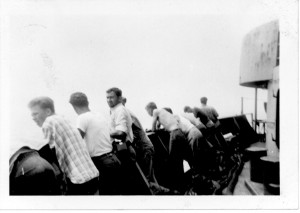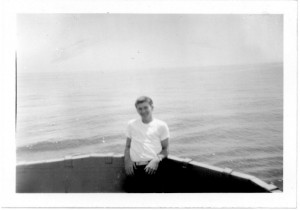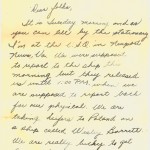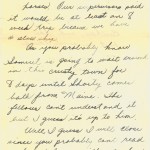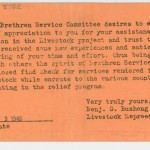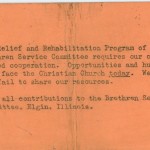Here is our last installment of Ernest Boyer’s participation in a humanitarian relief effort with the Brethren Service Committee after World War II. Thanks to a scrapbook, we have been able to share photos and journal entries written by Ernie. This final installment includes Ernie’s last days on the Wesley Barrett – read further to discover the condition of the sea, the beauty of a rainbow, and where the crew learns the ship will dock. On July 20, 1946, Boyer went through United States Customs and re-entered the country in Highgate Springs, Vermont. After over a month away, Ernie returned with a German helmet, a German gas mask, some chinaware, and plenty of memories.
Friday, July 12, 1946 –
A typical “calm after the storm” day the sun shone brightly and the sea was calm. This afternoon I spent the time taking a sunbath and got rather “red.”
Saturday, July 13, 1946 –
It was rather cloudy today. The sea is “choppy” again. Got official news today that we are going to Montreal Canada. The cowboys are really in an uproar because there is a possibility we cannot get off the ship since that is a foreign part. They say we may have to stay by it for another trip. Sea got very rough again tonite! I could hardly sleep because I kept rolling from side to side and cups, plates, glasses [and] the like kept rattling [and] breaking. Solid ground would feel very good right now.
Sunday, July 14, 1946 –
It was a very nice sunny day even though the boat was very rocky. Had our Sunday service today with Melvin Hess in charge. Ship still heading for Montreal. We are supposed to stop at Halifax Nova Scotia to get maps of the St. Lawrence. Had a chicken dinner today. Spent the afternoon taking a sun bath. Had news tonight that the ship might be turned over to Canada. Don’t know if its the truth or not. Rocky tonite again.
Monday, July 15, 1946 –
Today was rather cold and chilly. The sea is becoming more calm which is proof that we are getting near land. Tonite we got our first glimpse of land which was Nova Scotia. We stopped at Halifax to pick up charts of the St. Lawrence River. Land sure looked good.
Tuesday, July 16, 1946 –
Have been going past land all day still Nova Scotia and surrounding territory. The country is beautiful up here. We were within several hundred feet of land. We entered the Bay of St. Lawrence this evening. Since it was such a beautiful day, I was up in the turret most of the day enjoying the sun.
* I forgot to add that on Monday evening I viewed several of the most beautiful sights I have ever witnessed. First of all we were called up on topside to witness the most beautiful rainbow I have ever seen. Words cannot describe it but as compete semi-circle formed in the Eastern sky the colors grew in intensity until they were almost unbelievably rich and distinct, richer than any artist could paint it. And then as a crowning feature, another one formed just above it. The colors were just as distinct although slightly paler. The area within the semi-spheres was very light and radiant while without it was rather dark. It reminded me of a very immense [and] indescribably beautiful amphitheater. These had hardly faded out until a most beautiful sunset met our gaze. To top it off, about ten o’clock a gorgeous full moon appeared that lit up the sky and made a glorious reflection on the water. I don’t imagine I will ever witness such a night again.
Wednesday, July 17, 1946 –
When I awoke this morning it looked as it would be a beautiful day. However it has been cloudy and windy all day. We entered the mouth of the St. Lawrence this morning. Our fears of not being able to get off the boat were smashed today when Mr. Crist told us to sign up if we were getting off and that our checks would be waiting for us. I am thinking now of hitch-hiking home. Anyway it will be good to be back in the states.
Thursday, July 18, 1946 –
It was another beautiful day. I slept until almost noon. I was up on deck all afternoon watching the scenery as we steamed down the St. Lawrence. It was really beautiful. We were at Quebec about 3:00 PM today. It is said we will get to Montreal about 6:00 A.M. tomorrow morning.
